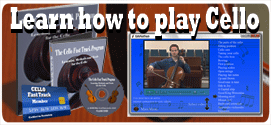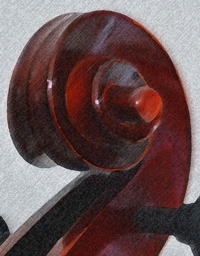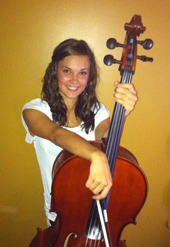Practicing
Customize your practice times to fit your life. I have had to change my practice schedule almost every five to six months. At first, I practiced at night. Then I found that practicing in the morning worked better. At other times, I actually drove to another building in the morning to find a quiet place to practice. Now, years later, I’m back to practicing at home at night. I recommend practicing for at least 30 minutes every other day as a bare minimum. If you can practice for an hour, then that will help you get past the “beginner  stage” even faster. If your schedule permits daily practice, then that will be even better. I do recommend taking one day off per week to give your mind and muscles a rest. Break your practice times into smaller sections of five minutes. Each practice should include some scales in the key in which you will be playing that day. When first starting, the key of D will be used most often. Music played in the key of D will keep you in the “first position.” Your first few weeks should include warm-ups in D major, followed by a beginner cello piece. Then play any music for your own enjoyment at the beginner level. Playing music that you enjoy is an important method for learning faster and growing musically.The cello fast track program includes musical pieces that will give you a well-rounded start. When I first started, I played most of the music that was included in my beginner books, but it seemed that there was always some music that was not as enjoyable as the rest. Make an effort to play each piece as you progress and stop playing the pieces that you don’t enjoy musically.
stage” even faster. If your schedule permits daily practice, then that will be even better. I do recommend taking one day off per week to give your mind and muscles a rest. Break your practice times into smaller sections of five minutes. Each practice should include some scales in the key in which you will be playing that day. When first starting, the key of D will be used most often. Music played in the key of D will keep you in the “first position.” Your first few weeks should include warm-ups in D major, followed by a beginner cello piece. Then play any music for your own enjoyment at the beginner level. Playing music that you enjoy is an important method for learning faster and growing musically.The cello fast track program includes musical pieces that will give you a well-rounded start. When I first started, I played most of the music that was included in my beginner books, but it seemed that there was always some music that was not as enjoyable as the rest. Make an effort to play each piece as you progress and stop playing the pieces that you don’t enjoy musically.
Motivation
As much as I love the cello, I can say that some days I need more motivation. I find myself on the couch after a long day, and I can’t seem to get up. I try this “trick” on myself, and it often works. I think, “I need to practice for the performance this weekend but don’t want to do a full thirty-minute practice.” I then tell myself, “Okay, Kyle, then at least play one scale and that new music and be done for the day with a ten-minute practice.” Before I know it, I’ve done the scale, started playing Bach, an hour passes, and I can’t put the cello down! Other days, I just do the ten-minute practice and call it a day. Your first two to four months will be the most important of all. This will get you past the beginner stage to where you can produce a good tone and sound less like a novice. As you work past the beginner stage, you will become more motivated. Don’t try to cram a whole week’s worth of practice into one day. Regular practice every other day or every day will build up your playing skills much better than cram sessions. With regular practice, you will become better, and your motivation will start to form from new musical experiences, playing new music, or practicing for a new show, gig, or just a fun musical session with family or friends.



